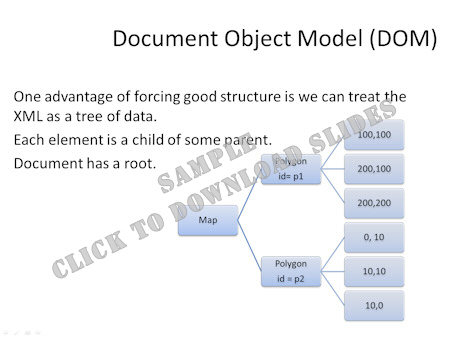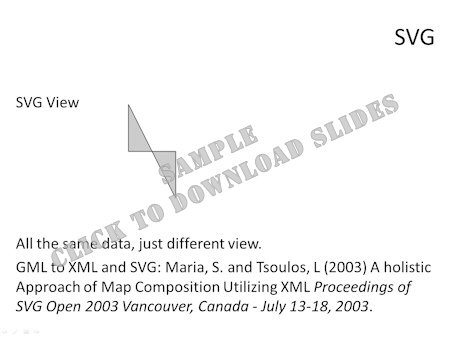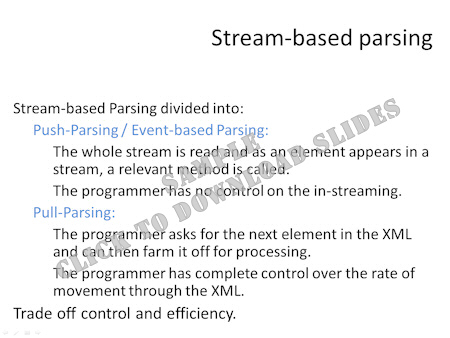Data: XML
[Part 6 of 12]
In this final part on data, we're going to look at the rise of modern text-based data formats, specifically XML and how to handle it. We'll look first at core XML and touch on some other data formats, before looking at styling and transforming XML, and, finally, dealing with XML in Java.
First, let's look at XML and text based formats more generally.
XML and other text formats (powerpoint)
Further info:
JSON homepage and Wikipedia summary
GeoJSON homepage and Wikipedia summary
Java parsers for JSON from JSON.org and Oracle
(Download).
SGML on Wikipedia
XML homepage and Wikipedia summary
GML and Wikipedia summary
DTD on Wikipedia and w3Schools
Schema on Wikipedia and w3Schools
Useful intro to XML namespaces on w3Schools
One of the advantages with XML is that it can be repurposed directly without alteration, through styling and transformations.
Further info:
GML to XML and SVG: Maria, S. and Tsoulos, L (2003) A holistic Approach of Map Composition Utilizing XML Proceedings of SVG Open 2003 Vancouver, Canada - July 13-18, 2003.
XML Notepad (see "tools").
Styling and Transforming (powerpoint)
Finally, we'll look at processing XML in Java.
Processing XML with Java (powerpoint)


